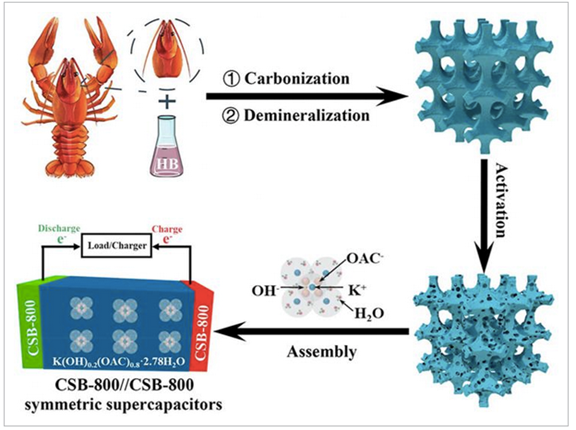Use Crayfish Shells to Store Energy
Sometimes, you just have to wonder about how certain technologies are stumbled upon. This one is no exception. According to Professor ZHU Xifeng’s team from the University of Science and Technology of China (USTC) of the Chinese Academy of Sciences (CAS), it possible to use crayfish shells as a biological template for high-performance supercapacitors. The team’s work was recently published in Carbon.
Compared to other high-performance materials, biomass is promising for its environmental friendliness and extensive resources. However, practical application of biomass is restricted by their relatively rare efficient storage sites, low diffusion kinetics, and the need for a huge number of premade nanotemplates. Now, researchers are using crayfish shells to get that biological template.
In preparation, shells are dried, ground, and pretreated in an alkaline solution. Then they are mixed with the heavy fraction of bio-oil from agricultural waste to manufacture hierarchical porous carbons, a type of supercapacitor material.
The mixed product delivers a capacitance of 351 F/g based on its ultrahigh specific surface area, large total pore volume, and reasonable content of oxygen atoms. Symmetric supercapacitors assembled by the synthetic samples have a superior energy density of 20 Wh/kg at a power density of 350W/kg, preceding other biomass materials.
The environmentally friendly solution solves a power storage problem for wearable displays, electric vehicles, and smartphones.

